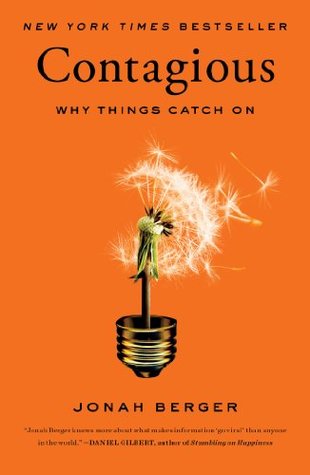More on this book
Community
Kindle Notes & Highlights
Word of mouth is the primary factor behind 20 percent to 50 percent of all purchasing decisions.
Word of mouth is more effective than traditional advertising for two key reasons. First, it’s more persuasive.
Word of mouth, on the other hand, is naturally directed toward an interested audience.
If they can get people to talk about their idea or share their content, it will spread through social networks like a virus, making their product or idea instantly popular along the way.
Research by the Keller Fay Group finds that only 7 percent of word of mouth happens online.
we forget that people also spend a lot of time offline. More than eight times as much, in fact. And that creates a lot more time for offline conversations.
Word-of-mouth marketing is effective only if people actually talk. Public health officials can tweet daily bulletins about safe sex, but if no one passes them along, the campaign will fail.
Contagious content is like that—so inherently viral that it spreads regardless of who is doing the talking.
Most people would rather look smart than dumb, rich than poor, and cool than geeky.
So to get people talking we need to craft messages that help them achieve these desired impressions.
Making things more observable makes them easier to imitate, which makes them more likely to become popular.
“The most powerful marketing is personal recommendation,”
if something is supposed to be secret, people might well be more likely to talk about it.
we all made similar inferences because choices signal identity.
What people talk about also affects what others think of them.
There are three ways to do that: (1) find inner remarkability; (2) leverage game mechanics; and (3) make people feel like insiders.
talking about remarkable things provides social currency.
Something can be remarkable because it is novel, surprising, extreme, or just plain interesting. But the most important aspect of remarkable things is that they are worthy of remark. Worthy of mention.
Sharing extraordinary, novel, or entertaining stories or ads makes people seem more extraordinary, novel, and entertaining.
As the story gets transmitted from person to person, some details fall out and others are exaggerated. And it becomes more and more remarkable along the way.
The key to finding inner remarkability is to think about what makes something interesting, surprising, or novel.
One way to generate surprise is by breaking a pattern people have come to expect.
Mysteries and controversy are also often remarkable.
Game mechanics are the elements of a game, application, or program—including rules and feedback loops—that make them fun and compelling.
People don’t just care about how they are doing, they care about their performance in relation to others.
Game mechanics help generate social currency because doing well makes us look good.
Scarcity is about how much of something is offered.
But exclusivity isn’t just about money or celebrity. It’s also about knowledge. Knowing certain information or being connected to people who do.
Having insider knowledge is social currency.
People are happy to talk about companies and products they like, and millions of people do it for free every day, without prompting.
we need to use scarcity and exclusivity to make people feel as if they’re insiders.
Marketing is about spreading the love.
what most people don’t realize is that they naturally talk about products, brands, and organizations all the time.
Since we want others to think we’re interesting, we search for interesting things to tell them.
Interesting products didn’t receive any more word of mouth than boring ones.
Some word of mouth is immediate, while some is ongoing.
For most products or ideas, however, ongoing word of mouth is also important.
interesting products received more immediate word of mouth than boring products.
interesting products did not sustain high levels of word-of-mouth activity over time. Interesting products didn’t get any more ongoing word of mouth than boring ones.
Polling location had a dramatic impact on voting behavior.
Triggers matter.
By acting as reminders, triggers not only get people talking, they keep them talking. Top of mind means tip of tongue.
The more the desired behavior happens after a delay, the more important being triggered becomes.
Triggers are the foundation of word of mouth and contagiousness.
Triggers and cues lead people to talk, choose, and use. Social currency gets people talking, but Triggers keep them talking. Top of mind means tip of tongue.
Two reasons people might share things are that they are interesting and that they are useful.
awe boosted sharing.
Emotion sharing is thus a bit like social glue, maintaining and strengthening relationships.
positive articles were more likely to be highly shared than negative ones.
Arousal kindles the fire.


